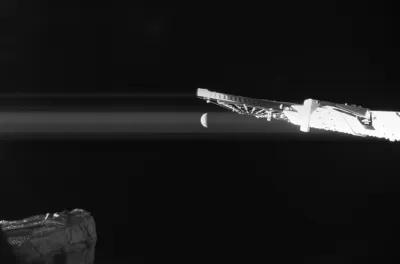Paris: BepiColombo, a joint mission of European Space Agencys (ESA) and Japan Aerospace Exploration Agency (JAXA), has successfully completed the third of its six encounters with Mercury -- about 236 kilometres above the planets surface.
The spacecraft, which is on its way to the mysterious innermost planet of the solar system Mercury, aims to enter the planet's orbit in 2025.
The third encounter with Mercury was made at 19:34 UT (1:04?am IST) on Tuesday.
"Our BepiColombo esaoperations team confirmed all went well with our MercuryFlyby last night! Now we wait and see what images & data our instrument teams collected," the mission officials wrote on Twitter on Tuesday.
"#Mercury is in our sights as we speed towards tonight's close #MercuryFlyby!" they wrote while capturing an image from a distance of about 121, 000 km.
BepiColombo approached on the night side of the planet, meaning the most interesting views of Mercury's surface will be recorded by the spacecraft's monitoring cameras from about 13 minutes later.
"The day-night side on #Mercury is clearly visible and you may just be able to make out the difference between lighter and darker terrain on the planet's surface," the officials wrote on Twitter.
While the flyby gives opportunity to snap images and also check science instrument operations at Mercury before the main mission begins, the primary reason for the flyby is to use the planet's gravity to guide BepiColombo's path through the inner Solar System. BepiColombo launched into space on an Ariane 5 from Europe's Spaceport in Kourou in October 2018 and is making use of nine planetary flybys: one at Earth, two at Venus, and six at Mercury, to help steer into Mercury orbit.
After this flyby, the mission will enter a very challenging part of its journey to Mercury, gradually increasing the use of solar electric propulsion through additional propulsion periods called 'thrust arcs' to continually brake against the enormous gravitational pull of the Sun.
These thrust arcs can last from a few days up to two months, with the longer arcs interrupted periodically for navigation and manoeuvre optimisation.
Mercury is the least explored rocky planet of the Solar System, with one of the main reasons being that getting there is really difficult.
As BepiColombo gets closer to the Sun, the powerful gravitational pull of our host star accelerates the spacecraft towards it. Gravity assist flybys are a great way to change course using very little fuel, but they are far from simple. —IANS
BepiColombo Spacecraft Completes Third Closest Flyby Of Mercury
 T
TJun 20, 2023, 11:07 AM
